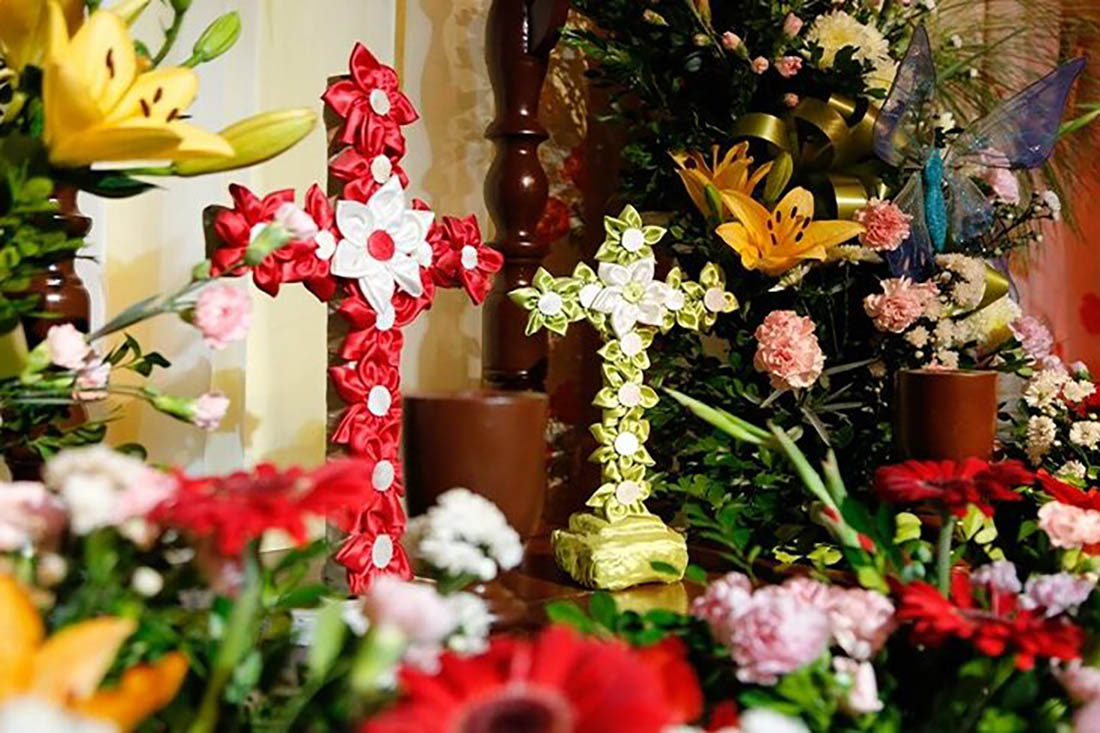By: Verónica Fernández Díaz
The maypole altar is a traditional and popular 19th century festivity. Its celebration in Cuba dates back to the mid-18th century and has similarities with the Andalusian festivals. It reached great popularity during the 19th century and the first decades of the 20th in Puerto Príncipe, while in the rest of the country remained only until the middle of the 19th century.
The celebration began on May 3rd and was brought to Cuba by the Spanish. Its roots lie in the Iberian custom of placing a wooden cross on the hills near populated communities to avoid catastrophes, epidemics and all kinds of misfortunes. Unlike other areas of the country, the altars celebrated in Puerto Príncipe had their own characteristics: the black population did not participate in them until the 20th century, and they transferred their celebration to elite spaces such as the Benemérita Sociedad Santa Cecilia.
As the region did not have elevations where to place the cross, the activity was limited to certain houses arranged for this purpose, mainly in the Bembeta neighborhood and the streets of San Fernando, Alfonso XII, San José and San Patricio.
From the eve of the 3rd and until the 9th of May, families and guests gathered to dance, sing and play, and sometimes eat and drink. This festivity could be extended until the 31st, even to the 24th of June, coinciding with those of San Juan. During the first night, the owner of the house delivered a bouquet of flowers to the chosen guest and, upon receiving it, he contracted the obligation to reform the altar and pay the expenses of the following night, for which he was given the title of godfather. In the houses, dances such as the rigodon were danced – a dance of French origin with a binary rhythm that is danced between two or more couples with a variety of figures – and the virginia – one of the dances of the suite and dance for couples – accompanied by harp, marimba and piano; Andalusian melodies were also sung. At the end of the dance, a bow was placed on the shoulder of the gentleman in whose house the next maypole was to be celebrated, or several godparents were appointed who sent beautiful bows to the girls they wanted as godmothers at the next party.
In 1878, maypole festivities were held at the Benemérita Sociedad Popular Santa Cecilia on Tuesdays, Thursdays and Saturdays of each week paid for by ten godfathers and ten godmothers. This turned out to be one of the most brilliant times of the Society. But the celebration in private homes did not stop, according to Juárez Cano, in one of the festivities held in the alley of Jaime shortly before the outbreak of the War of Independence (it is inferred to be that of 1895-1898), he played in the house of the Father Mayola’s family is the famous Pachencho, who played Waltz on the Waves on his harp, and when the sweets and drinks ran out, and the godfather refused to look for more, a mess broke out. Then Pachencho played a happy paso doble and began a prudent retreat, protecting his harp from the enraged bottle blows.
José Arango y Padrón, known as Pachencho, was a barber by trade and one of the best-known and most famous harpists in Puerto Príncipe. He learned the cajón harp with an instrument built in 1871 and later rebuilt by him. With this harp he was part of the Melodic Quartet that was also made up of guitars and harpsichords and played Cuban music.
He also played the horn, but his forte was his harp, the very old instrument without chromaticism, called by him the Little Horse, on which he performed with art and, above all, with great grace, the danzones, songs, boleros and claves of which he was an author: works that were distinguished by the fineness, perfection and purity of the forms.
After the War of Independence, the maypole festivity returned, but the crucified was no longer placed in the center, nor was the rosary said, nor were couplets and songs alluding to the act sung, but began directly with the dance, for which it became a secular party, good for finding a partner and having fun. Over time the so-called colored societies gradually disappeared from the socio-cultural context of the Republic.
Translated by: Aileen Álvarez García






